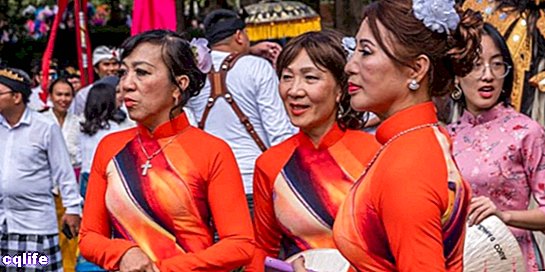- What is interculturality?
- Principles of interculturality
- Importance of interculturality
- Examples of interculturality
- Interculturality and multiculturalism
We explain what interculturality is, its principles, examples and why it is important. Also, what is multiculturalism.

What is interculturality?
Interculturality is the Social phenomenon, cultural and communicative in which two or more cultures or, rather, representatives of different cultural identities specific, are related under conditions of equality, without any point of view prevailing over the others or being considered "normal". This type of relationship favors dialogue and understanding, integration and the enrichment of cultures.
Although culture has always been a field of frequent exchanges, crossbreeding and hybridizations, the concept of interculturality is typical of modern times. Today the globalization and the Commerce have brought together individuals from very distant geographies and cultures, and the migration it is an everyday phenomenon. For this reason, the idea of interculturality is in contact with other similar ones, such as those of diversity, plurality and multiculturalism.
However, the horizontal dialogue posed by interculturality has not been exactly common in human history. The empires economic, cultural hegemony and colonialism are a legacy that is difficult to reconcile with the idea that, deep down, cultures are all the same, without some being more advanced than others, or some better than others, but that everything depends on the point of view (that is, the own cultural framework) of whoever opines.
Principles of interculturality
The principles of interculturality can be summarized as follows:
- There are no better cultures than others, or more advanced, but all are equally worthy and deserving of I respect. Therefore, the only way to understand a culture is to interpret it from your own criteria.
- Cultures are enriched by contact with others: the greatest manifestations of cultural richness and variety are associated with migration, integration, hybridization and miscegenation.
There are three recognizable types of interculturality:
- Relational interculturality, when it has to do with the contact between cultures, that is, the coexistence egalitarian between persons from different cultural backgrounds.
- Functional interculturality, when it has to do with the inclusion of traditionally marginalized groups in the economic, cultural, social and political apparatus of the nation, through equalizing mechanisms, such as positive discrimination.
- Critical interculturality, when it has to do with the promotion of a critical debate regarding the relations between cultures, to illuminate and question the historical, colonial and racial inequalities between the different cultures, fostering a high-level cultural dialogue.
Importance of interculturality
Interculturality is vital in times of massive migration and cultural plurality, such as those of globalization. Basically, it is about proposing instruments to rethink traditional social, political and economic dynamics, in which a cultural group exercised hegemony over the others.
In this sense, the concept of interculturality is more useful than that of multiculturalism or pluralism, which simply diagnoses the presence of sociocultural elements other than traditional ones in a community.
Examples of interculturality

These are examples of intercultural relations today:
- The dynamics of international student exchange and promotion of learning of others Languages (and with them, other cultures).
- The promotion of a global culture through initiatives such as the World Heritage Site of UNESCO and others institutions Similar.
- The academic reassessment of traditions cultural and social formerly scorned for belonging to "barbarian" or "backward" peoples.
- The hybridization of markets typical of the economic globalization.
Interculturality and multiculturalism
The concepts Interculturality and multiculturalism have many points of similarity, referring to the coexistence in human communities of people with different cultural backgrounds. However, multiculturalism is content to point out and value cultural plurality, often ignoring the political and historical links that exist between cultures, and which are largely responsible for the place that each one traditionally occupies.
On the other hand, interculturality normally proposes an egalitarian, that is, political-social valuation of the relations between cultures, emphasizing synergy and the points of contact, hybridization and mutual enrichment between them.
